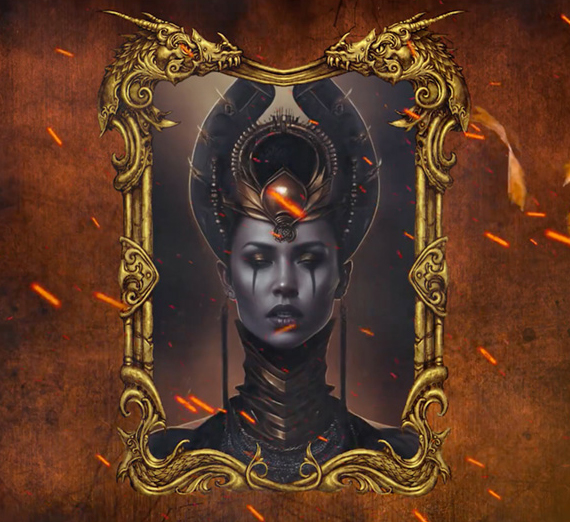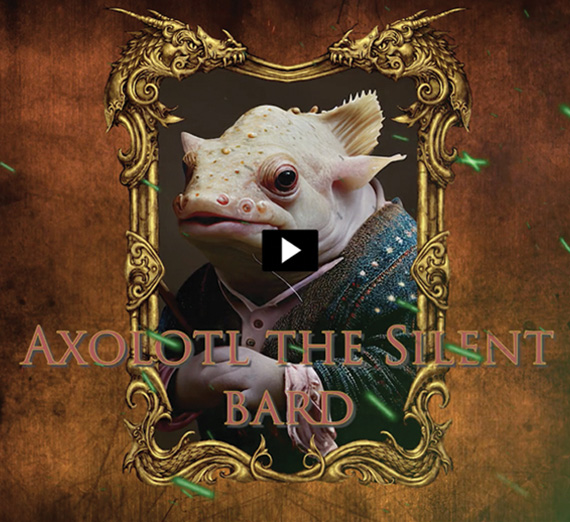Fair Use of Media in Online Teaching

Copyright is a concept that hovers around the periphery of educators’ consciousness like some impending catastrophe, always mere moments away from destroying your world. Though the law itself is, in this writer’s opinion, a bit too vigorous in protecting the rights of individual and corporate copyright holders, it is something that the informed online instructor can manage. With knowledge of the concepts of fair use and other educational uses and how they can be applied in the classroom, you, as an education professional, can navigate the treacherous path of copyright with relative ease. The first step, of course, is in understanding what copyright is.
Copyright
Eric Faden of Bucknell University created this satirical, though informative, overview of copyright law and fair use titled “A Fair(Y) Use Tale,” which uses clips from Disney films to explain the general concepts behind copyright law and fair use:
The U.S. Copyright Office defines copyright as legal protection for the original author of a creative work. These works can include: literary works, musical works (including lyrics), dramatic works (including accompanying music), pantomimes and choreographic works, pictorial, graphic, and sculptural works, motion pictures and other audiovisual works, sound recordings, architecture, and computer programs (https://www.copyright.gov/circs/circ01.pdf). These categories are broadly interpreted to cover emerging forms as well. Copyright law gives the owner of the work the exclusive right to:
- reproduce the work in copies or phonorecords (audio recordings)
- prepare derivative works based upon the work
- distribute copies or phonorecords of the work to the public by sale or other transfer of ownership, or by rental, lease, or lending;
- perform the work publicly, in the case of literary, musical, dramatic, an d choreographic works, pantomimes, and motion pictures and other audio visual works
- display the work publicly, in the case of literary, musical, dramatic, and choreographic works, pantomimes, and pictorial, graphic, or sculptural works, including the individual images of a mot ion picture or other audio visual work
- to perform the work publicly by means of a digital audio transmission (in the case of sound recordings)
The duration of a copyright is also important for educators to understand. For any work created after 1978, an individual has the exclusive right to that product for the remainder of their lifetime, plus an additional 70 years. For media created by a corporate entity, copyright duration is 95 years from the date of publication, or 120 years from the date of creation (whichever is shorter)
Copyright Resources
This table from Cornell University provides an excellent breakdown of publication dates and current state of ownership in the United States.
Effectively, copyright lasts forever in regard to use by anyone not holding the rights. It is against the law for anyone else to violate these privileges, but they do have limitations. Examples relevant to educators include:
- Expiration of the copyright – If the work has fallen into the public domain, it is freely available to be used, reproduced, or modified.
- Any government publication (including audio and video recordings) is automatically in the public domain.
- Library exceptions – Under some circumstances, libraries may create one copy of a copyrighted work for archival purposes, as replacements, if a work is out-of-print, or as a loan to another library.
- Educational uses – Copyrighted works may be displayed in a classroom setting by not-for-profit educational institutions.
- Fair Use – Under certain circumstances, copyrighted materials may be “fairly used” by individuals other than the copyright holder.
For our purposes as online educators, the latter two - educational use and fair use - are worth a more detailed examination.
Educational Use
As educators copyright law is limited in regard to both the use of material in research and the classroom. The guidelines for classroom use of copyrighted material apply only to not-for-profit educational institutions. (For-profit educational institutions do not currently fall under the educational use exceptions and must comply strictly with copyright law as it applies to businesses. For-profit institutions and their instructors must pay for the use of copyrighted material or require students to purchase any texts that will be used in the course. Fair use rules do apply, however link below. When making multiple copies (of print materials and music) for classroom use, an instructor may provide the appropriate number of copies for their students, contingent upon meeting the requirements outlined below. A similar rule applies for online instructors so long as the course is mediated (run by an actual instructor, whether synchronously or asynchronously). The guidelines for the use of these materials are as follows:
- Brevity – Essentially, this means that you are using only a small portion of the material. Specific guidelines apply for different types of materials. Please consult the guidelines for details. http://www.copyright.gov/circs/circ21.pdf
- Spontaneity – The individual instructor (not the institution) decides to use the material without sufficient time to request and obtain permission.
- Cumulative Effect – The copying is for one course only. No more than one article, short poem, story, or essay, or two excerpts from the same author, or three from the same collection may be used. No more than nine total instances of multiple copying may occur during one class term.
- Each copy contains a notice of ownership.
In addition to these guidelines,
- The copied materials cannot replace anthologies, compilations, or the purchase of books or publisher reprints.
- You may not copy educational “consumables,” such as workbook pages or tests.
- The copying cannot be directed by the institution.
- Students may not be charged for the copies beyond the actual cost of the photocopying.
- The activity of reproducing these materials may not be repeated from term to term by the same instructor.
In short, a one-time use, when you have spontaneously decided to use a limited amount of material is allowable. However, the next time you teach the same course, you would be required to seek copyright permission (or require that students purchase the materials) unless the content is in the public domain. There are, however, some different guidelines for the use of video in an online course, as outlined by the University of Connecticut’s Media Resource Guide, if all of the following criteria are met:
- The class is taught at a non-profit educational institution.
- The film/audiovisual material is related to the course.
- The film/audiovisual material is acquired legally (e.g., purchased or licensed).
- The use of the film/audiovisual material is comparable to the amount that is typically displayed during a live classroom session and is a "reasonable and limited portion of the material.”
- The film/audiovisual material is displayed at the direction, or under the supervision of the instructor.
- The transmission or display is solely available to the students officially enrolled in the course, to the extent technologically feasible.
- The educational institution has clear copyright policies and provides copyright guidelines to faculty, students, and staff.
- The educational institution applies reasonable technological measures to prevent viewers from retaining or downloading a copy of the work or transmitting the work to others.
(http://classguides.lib.uconn.edu/mediaresources)
However, The TEACH Act (Section 110(2) of the U.S. copyright law) specifies conditions under which educators may perform or display copyrighted works in distance education or online environments. Showings may only include using "reasonable and limited portions" of works that do not qualify as nondramatic literary or musical works. Commercial films and other audiovisual materials do not qualify, so the ability to transmit and show full-length films in a distance education course is dramatically limited, whereas it would not be in a face to face classroom. For more on the TEACH Act visit the University of Texas’ “Copyright Crash Course.”
To learn if your intended use of media in the classroom qualifies as an educational use, refer to these available online tool https://librarycopyright.net/resources/ provided by the Copyright Advisor Network.
Fair Use
While Face to Face educators have great leeway in the use of copyrighted materials in their classrooms, online educators still face more challenging restrictions. But since distance education is by its very nature an innovative endeavor, a little creative use of media in the virtual classroom can help alleviate some of these issues. The online instructor does have access to fairly use a great variety of copyrighted materials so long as the use of the materials falls within the best practices set by the U.S. Copyright Office and more fully clarified by organizations such as the Center for Center for Media & Social Impact and Stanford’s Center for Internet and Society, which endeavor to explain the importance of using existing media as a foundation for new creation and the advancement of knowledge.
So, what does fair use look like and how might it be useful in an online course? The Center for Media & Social Impact has compiled a handbook for best practices in fair use, that, while originally created for documentary filmmakers, provides a comprehensive overview of fair use and the ways in which media may be used. The document specifies four basic types of use which should be categorized as “fair uses” of copyrighted material:
- Social, cultural, or political satire
- Illustrating an argument or making a point
- Capturing copyrighted material in context as incidental background images or sounds
- Using the material to convey a historical setting or feeling
Even within these uses, however, the constraints can be understood by asking yourself the following questions:
- Did my unlicensed use transform the meaning of the original into something new?
- Did I use an appropriate amount of material? Or Did I utilize more copyrighted material than was absolutely necessary?
- Did I make reasonable attempts to obtain permission for the use of the media? This applies particularly to commercial endeavors, where the copyrighted material will be used in the creation of new commercial media.
- Have I properly attributed the material to the copyright holder?
- Does the material that I used stand on its own? Or, is the use an attempt to capitalize on the notoriety of the original as a means of promoting my production?
- Did my use of copyrighted media borrow from different sources whenever possible?
If you can answer “yes” to these questions, you are likely within your rights to make use of the material in question. In terms of transformative meaning, take the following video as an example:
Scary Mary Poppins Trailer
While the film Mary Poppins is still well within its copyright as a corporate creation, this innovative use of actual movie footage transforms the original in such a way as to create new and entertaining content.
This Center for Media & Social Impact video explains “Remix Culture” and how fair use applies to videos like the Mary Poppins Trailer:
Where does all of this information leave the online instructor? Unfortunately, it seems that uploading full-length films for students to watch and discuss is not an imminent possibility. Showing short clips can often fulfill the needs in a class, but a more innovative use of media is in having students create their own video mashups utilizing copyrighted material to illustrate an argument, satirize something or craft new meaning from old material. Having students re-create movie trailers from an individual film or the footage of many films has the potential to engage students in interactive storytelling and knowledge creation. Sharing these original pieces and discussing or critiquing them online provides an interesting venue for classroom interactions. Here is one example of a student-created piece utilizing copyrighted materials to discuss the portrayal of people of Middle Eastern descent in the media:
A wealth of free resources are available to help students become media producers in their classes. A fairly comprehensive list is provided here
While this may not be the perfect solution for porting your Face to Face class to an online version, that shouldn’t really be your goal as an online instructor. Rather than think of the limitations of teaching online, think of the possibilities provided by teaching in a media-rich environment. Embrace the power of Web 2.0 media creation and sharing tools in your class and both you and your students will be rewarded.
Additional Information about Copyright and Fair Use
-
Stanford University Center for Internet and Society: Fair Use Project
https://cyberlaw.stanford.edu/taxonomy/term/374 -
Definition of Fair Use from Stanford University:
http://fairuse.stanford.edu/Copyright_and_Fair_Use_Overview/chapter9/ -
Electronic Frontier Foundation: Teaching Copyright
http://www.teachingcopyright.org/ -
Center for Social Media: Fair Use Best Practices: Doc Films, Internet Video, Media Literacy and others
http://www.centerforsocialmedia.org/fair-use -
Center for Social Media Fair Use teaching Tools
http://www.centerforsocialmedia.org/fair-use/related-materials/teaching-materials
More Fun Re-Cut Movie Trailers
The Shining as a romantic comedy
Se7en as a love story
Silence of the Lambs as a love story
Disney’s UP cut to audio from Gran Torino
- Academics
- College of Arts & Sciences
- School of Law
- Online Programs
- Film Studies




